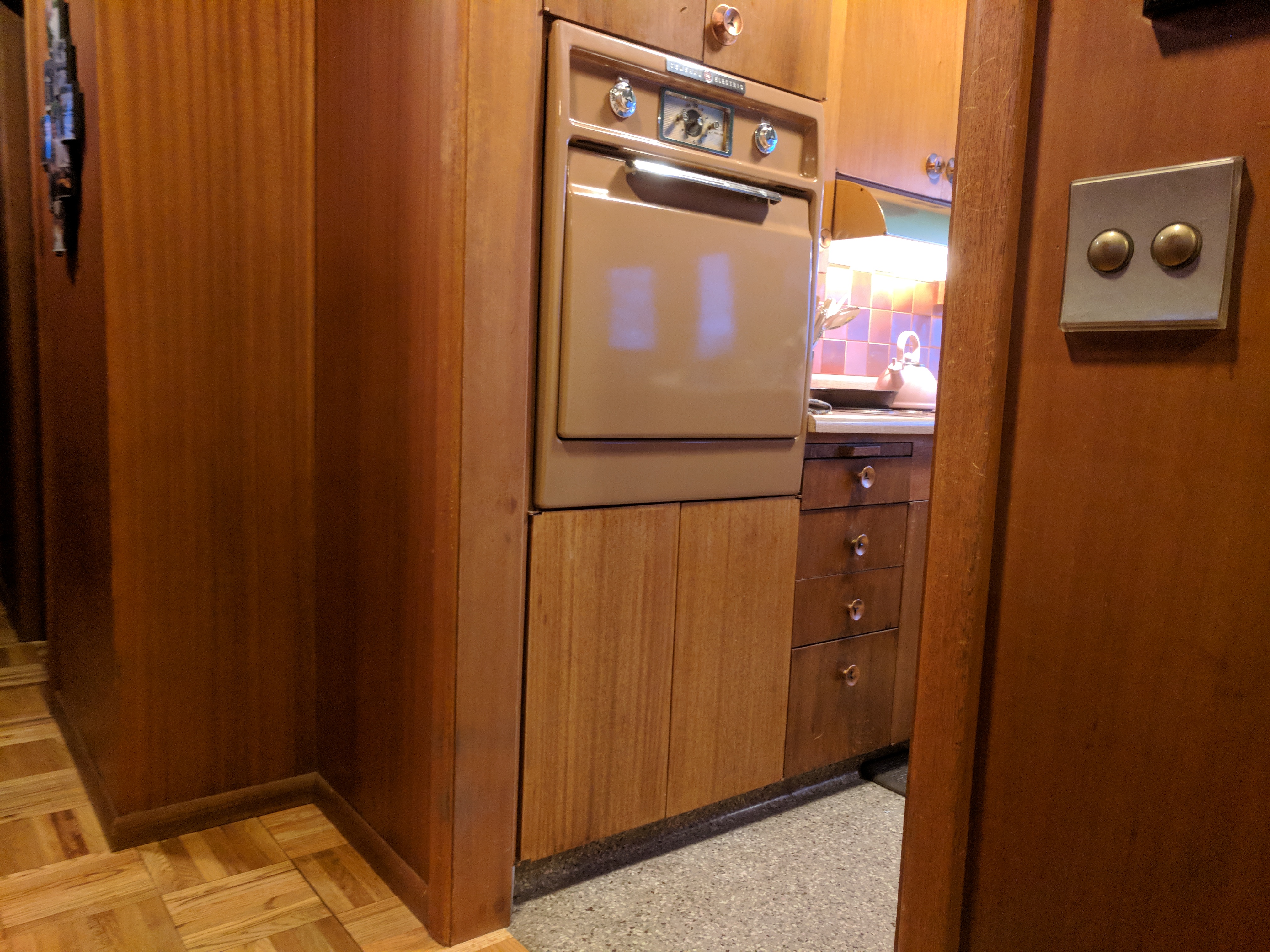‘Cause we’ve all got ’em and no intelligence is universal.
Blind-spots
We had an accident in the Leachman family household. A routine effort to clean the kitchen oven ended up stripping the veneer off the poor cabinets below. Have no fear, I’m a woodworker.
Our house is a true relic. Original custom mid-century modern built in 1956 with gorgeous tongue-and-groove ceilings and Polynesian Mahogany paneling throughout. I’m 100% sure it’s Polynesian Mahogany because it’s specified in the original blue prints we have framed on the wall.
So a jaunt to the hardware store produced some Polynesian Mahogany boards which I had shaped, bonded, and finished after a day. I proudly installed the doors and stepped back to look at my wife for the “I fixed it” moment.
Only to realize the cabinets in our kitchen are not Polynesian Mahogany, but stained Maple instead. You may have even missed this difference in the photo.
The Polynesian Mahogany cabinet doors were left as a persistent reminder of what I like to call “blind-spots”: our flawed assumptions about the simplicity of our complex world.
Let’s pause for a moment. Look out straight ahead of you. Now within your field of view, notice something that you’ve never noticed before.
It’s not too hard to find blind spots. When you think about the torrent of information our senses unleash on our brains, it’s only natural for our brains to develop compression algorithms. If we noticed and remembered everything, always, we’d be wrecks. Our brains have an incredible ability to simplify the world around us via assumptions. These assumptions are typically formed relative to our values. It’s this combination of observations and assumptions that form our unique conscious realities.
And it’s these inevitable flaws in our assumptions that create our blind spots. The trick is in identifying and fixing those blind-spots that will matter down the road.
The Discovery of Blind Spots
Knowing what you don’t know is just as hard as knowing what you do. Sometimes the fastest way is for a friend to point out a blind spot as it’s easier to spot them in others. I’ve noticed I receive a few responses when I discover a true blind-spot in someone else: 1) avoidance, 2) denial, and 3) an overly long blank stare.
It’s no coincidence that Alcoholics Anonymous preaches the mantra, “admitting you have a problem is the first step to recovery.” Identifying you have a blind-spot makes it a value that you can begin building knowledge about.
Another response I often get and give is, “I never thought about it like that.” This is someone who has constructed knowledge in an area, but had a small blind-spot in putting it together. These are relatively easy fixes that people are more receptive to and are often fixed with just that response.
It’s the BIG blind-spots that are a lot harder to remedy. Start by adopting common terminologies and labeling. Implicit culture bias is an example of a blind spot that often slips below the awareness level until something becomes labeled, such as a microaggression.
Correcting Blind-spots
In his fantastic autobiographical book on wood working, “Why we Make Things and Why it Matters: The Education of a Craftsman,” author Peter Korn establishes that people engage in an artistic or creative pursuit because they believe that afterwords they will somehow be changed by it.
As the wisdom of Lao Tze says, “Tell me and I’ll forget. Show me and I may remember. Involve me and I’ll understand.”
We find and most effectively fix our blind-spots by doing things. It’s what shapes our consciousness. It’s these reality-based feedback loops that shape our realities. It’s the essence of scientific inquiry and research.
So take that road-less-traveled. Start a vacation with no plans. Stumble-upon. Improvise. Go too slow before going too fast. Above all listen.
See our world and all the spots it has to offer.
